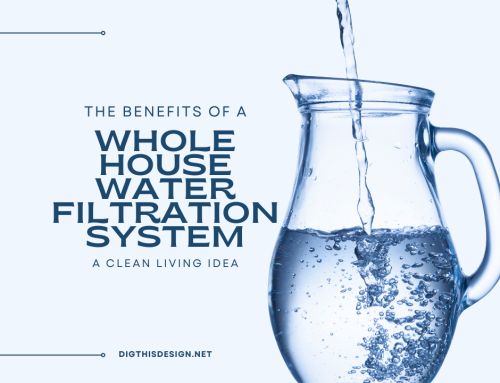Solar panels have become a popular choice for homeowners looking to save money on their energy bills and reduce their environmental impact. In this section, we will explore the various benefits of using solar panels, including how they can significantly reduce electricity bills, their positive impact on the environment, and their low maintenance costs. Additionally, we will discuss how installing solar panels can increase the value of your property providing you choose a professional and reliable photovoltaic solar panels company for installation. Let’s dive into the advantages of utilizing solar energy for your home.
The Benefits of Solar Panels

1. Solar Panels Reduce Electricity Bills
- Install the panels on your roof or in a sunny location.
- Connect the panels to an inverter to convert the sun’s energy into usable electricity.
- Use the electricity generated by the panels to power your home or business, reducing reliance on the grid and ultimately reducing electricity bills.
- Enjoy lower electricity bills as you consume less energy from the utility company.
Pro-tip: Consider installing a battery storage system to store excess solar energy for use during nighttime or power outages.
2. Environmentally Friendly
Solar panels are environmentally friendly and offer several benefits:
- Reduces dependence on fossil fuels
- Decreases carbon footprint
- Minimizes air and water pollution
- Promotes renewable energy
3. Low Maintenance Costs
- Regular Cleaning: Keep the panels clean by removing dirt, debris, and leaves regularly to ensure low maintenance costs.
- Inspection: Conduct routine inspections to identify any damage or issues that may require maintenance or repairs.
- Monitoring: Monitor the performance of the solar panels to ensure they are functioning optimally and to keep maintenance costs low.
- Professional Maintenance: Schedule professional maintenance at least once a year to ensure the longevity and efficiency of the solar panels and to minimize maintenance costs.
4. Increases Property Value
Installing solar panels can have a positive impact on your property’s value. Research has demonstrated that homes with solar panels can sell for an average of 4% – 5% higher. This translates to a potential increase of $12,000 – $15,000 for a home valued at $300,000.
How Much Money Can You Save With Solar Panels?
One of the most appealing aspects of solar panels is their potential for cost savings. However, the actual amount of money you can save will depend on various factors. In this section, we will break down the key factors that can impact your savings with solar panels. We will also discuss the average savings per year and the return on investment (ROI) that you can expect from installing solar panels. Get ready to learn about the financial benefits of going solar!
1. Factors That Affect Savings
- Location and Climate: The amount of sunlight your location receives affects the energy production of solar panels.
- Orientation and Tilt: The angle and direction of your panels can impact their efficiency.
- Shade: Shadows from trees, buildings, or other obstructions can reduce panel performance.
- Panel Efficiency: Higher efficiency panels generate more electricity and result in greater savings.
- Incentives and Tax Credits: Government incentives and tax credits can significantly reduce the cost of installing solar panels.
Pro-tip: Always consult with a solar professional to assess the specific factors that affect savings in your location and maximize your potential savings.
2. Average Savings Per Year
- The amount of money saved per year with solar panels varies depending on several factors:
- Location and climate: Sunnier regions generally produce more electricity and result in higher savings.
- System size: A larger solar panel system can generate more electricity and potentially provide greater savings.
- Energy consumption: The more electricity you use, the more potential savings you can see with solar panels.
- Electricity rates: Higher electricity rates can result in more potential savings with solar panels.
3. Return On Investment
- Evaluate the total cost of the solar panel installation, including equipment, labor, and any additional expenses.
- Estimate the savings on electricity bills over the lifespan of the solar panels.
- Consider any available tax credits, grants, or incentives that can reduce the initial investment.
- Calculate the Return On Investment (ROI) by dividing the total savings by the initial investment.
- Compare the ROI to other investment options to determine if solar panels are a financially viable choice.
It’s important to note that the Return On Investment for solar panels can vary depending on factors such as location, energy usage, and available sunlight. Consulting with a solar panel expert can provide more accurate information tailored to your specific circumstances.
In recent years, the ROI of solar panels has become increasingly favorable due to advancements in technology and decreasing costs. Many homeowners and businesses have seen significant savings on their electricity bills, making solar panels a wise long-term investment.
What Are The Costs Of Installing Solar Panels?
Installing solar panels may seem like a daunting and expensive task, but it can save you a significant amount of money on energy costs in the long run. However, it’s important to understand the various costs associated with installing solar panels. In this section, we’ll break down the different expenses you can expect, including the initial investment, maintenance costs, and financing options. By the end, you’ll have a better understanding of the financial aspect of switching to solar energy.
1. Initial Investment
- The first step in installing solar panels is to research and choose a reputable solar panel installer.
- Next, a site visit will be requested to thoroughly assess your property.
- Based on your energy needs and available space, a customized quote will be provided.
- To help cover the upfront costs, consider financing options such as loans or leasing.
- Additionally, review any available incentives or tax credits that can reduce the initial investment.
- Once a contract has been signed with the installer, the installation can be scheduled.
2. Maintenance Costs
- Regular cleaning: Keep solar panels free from dirt, leaves, and debris.
- Monitor performance: Check for any drops in efficiency or output.
- Inspect for damage: Look for cracks or loose connections.
- Professional maintenance: Schedule regular inspections and maintenance by a qualified technician to keep maintenance costs in check.
Pro-tip: Proper maintenance can extend the lifespan of your solar panels and maximize their performance, ensuring optimal energy savings and minimizing maintenance costs.
3. Financing Options
- Research different financing options for solar panel installation.
- Consider government incentives and rebates available for solar energy.
- Explore solar loans, where you borrow money to pay for the system and repay it over time.
- Look into solar leases, where you rent the solar panels and pay a fixed monthly fee.
- Consider power purchase agreements (PPAs), where a third party owns and maintains the system, and you purchase the electricity it produces at a predetermined rate.
What Are The Different Types Of Solar Panels?
When it comes to harnessing solar energy, there are various types of solar panels available on the market. Each type has its unique advantages and limitations, making them suitable for different circumstances. In this section, we will discuss the different types of solar panels, including monocrystalline panels, polycrystalline panels, thin-film panels, and BIPV (Building-Integrated Photovoltaics). By understanding the differences between these types, you can make an informed decision about which one is best for your energy needs and budget.
1. Monocrystalline Panels
- Monocrystalline panels, made from a single crystal structure, typically silicon, have a uniform appearance.
- These panels boast higher efficiency rates, ranging from 15% to 20%, making them more productive in limited space.
- They excel in high temperatures and low-light conditions, making them suitable for various climates.
- While monocrystalline panels may be more expensive than other types, their efficiency offers a higher return on investment.
2. Polycrystalline Panels
Polycrystalline panels are a popular type of panels known for their affordability and efficiency.
- They are made from multiple silicon crystals, resulting in a speckled appearance.
- Polycrystalline panels have a lower cost compared to monocrystalline panels.
- They have a slightly lower efficiency rating but still perform well in moderate to high sunlight conditions.
- Pro-tip: Consider polycrystalline panels if you have a limited budget but still want to benefit from solar energy.
3. Thin-Film Panels
- Thin-film panels are a type of solar panel that utilizes a thin layer of semiconductor material to produce electricity.
- They are lightweight and flexible, making them ideal for curved or irregular surfaces.
- Compared to other types of panels, thin-film panels have a lower efficiency but perform better in low-light conditions.
- They are commonly used in large-scale commercial projects or areas with limited space.
Did you know? The first commercial thin-film solar panel was developed in 1975 by Exxon Corporation.
4. BIPV
Building-integrated photovoltaics (BIPV) is a cutting-edge technology that seamlessly incorporates solar panels into the design and structure of a building. These panels not only provide renewable energy but also serve as a vital component of the building’s structure. BIPV is not only visually appealing but also promotes energy efficiency and helps reduce carbon footprint, making it a sustainable and eco-friendly option for contemporary construction.
How To Determine If Solar Panels Are Right For You?
Are you considering making the switch to solar energy, but not sure if it’s the right choice for you? There are a few key factors to consider in order to determine if solar panels are a viable option for your home. In this section, we will discuss the four main considerations: location and climate, available space, energy usage, and budget. By the end, you will have a better understanding of whether or not solar panels are a feasible and cost-effective solution for your energy needs.
1. Location and Climate
When considering solar panels, it is important to take into account the location and climate as crucial factors in assessing their effectiveness:
- Evaluating the amount of sunlight your area receives annually.
- Checking if there are any shading obstructions (e.g., tall buildings or trees) that may impact solar panel performance.
- Considering the climate conditions, extreme temperatures or heavy snowfall can affect solar panel efficiency.
For example, in a true story, a homeowner in a sunny location with minimal shading installed solar panels and saw a significant reduction in their electricity bills, leading to long-term savings.
2. Available Space
When considering solar panels, available space is an important factor to take into account. Here are some steps to determine if you have enough space:
- Assess your roof or property area to determine the available space for solar panel installation.
- Consider any shading or obstructions that may affect the placement of solar panels.
- Consult with a solar panel installer to determine the optimal placement and number of panels based on the available space.
Remember, maximizing available space can help you generate more solar energy and increase your savings.
3. Energy Usage
When considering solar panels, understanding your energy usage is crucial. Here are steps to determine if they are right for you:
- Assess your current energy consumption by reviewing your utility bills.
- Calculate your average daily energy usage by dividing the total monthly kWh by 30.
- Consider any future changes in energy needs, such as purchasing electric vehicles or adding appliances.
- Compare your energy usage to the potential solar system output to estimate the percentage of energy that can be offset.
If your energy usage aligns with the solar system’s capabilities, it’s worth exploring the benefits and costs of installing solar panels.
4. Budget
When creating a budget for installing solar panels, follow these steps:
- Assess your financial situation and determine how much you can allocate for the initial investment and ongoing maintenance costs.
- Consider the long-term maintenance costs and factor them into your budget.
- Explore financing options, such as loans or leasing, to manage the upfront costs.





